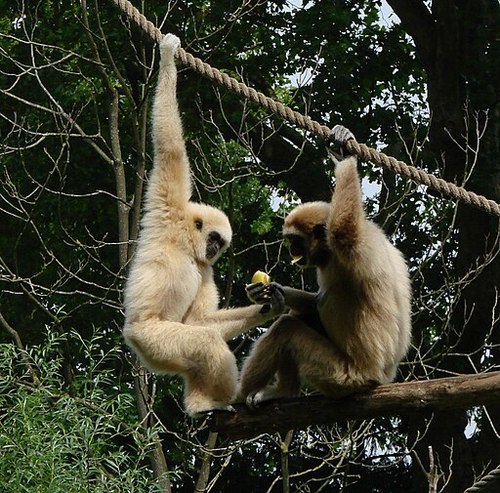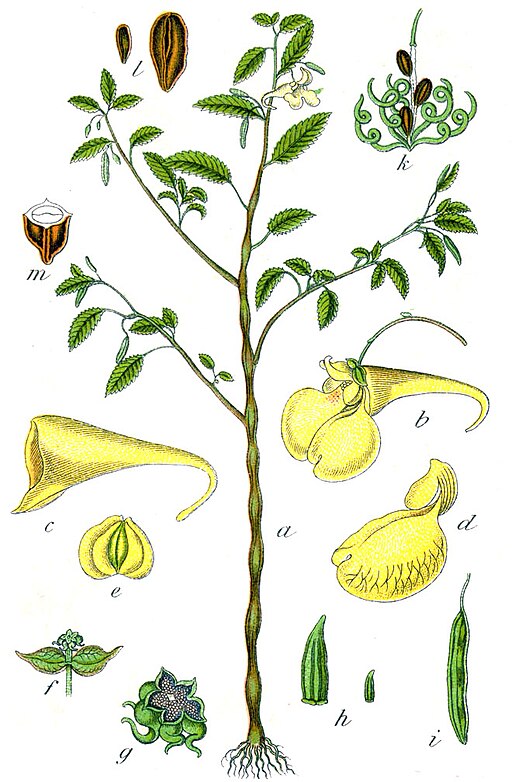水果和种子分散 - 高级
章节大纲
-
Fruit and Seed Dispersal
::水果和种子As an adolescent, have you begun to feel the desire to leave home and be “out on your own”? The need for dispersal is nearly universal among all living things, and “immobile” plants are no exception. The primary function of fruits and seeds is to disperse offspring so that young plants can grow away from parental and sibling or colonize new habitats . Reduction in competition among individuals within a selects for a variety of dispersal mechanisms, and species with efficient dispersal mechanisms better utilize available habitat. Many plant dispersal adaptations tap into environmental energy sources, such as wind, flowing , and gravity; others exploit (and reward) the mobility of .
::作为青少年,你是否开始感到想离开家,“独自离开”?在所有生物中几乎普遍需要驱散,而“流动”植物也不例外。水果和种子的主要功能是驱散后代,使年轻植物能够远离父母和兄弟姐妹,或开拓新的生境。减少个人之间在选择各种驱散机制和拥有有效分散机制的物种方面的竞争,更好地利用现有的生境。许多植物驱散适应措施利用风、流和重力等环境能源源;其他植物则利用(和奖励)流动。Most fruits and/or seeds have adaptations which promote seed dispersal; many of these depend on natural forces for energy. Milkweed pods dry to release winged seeds, which are carried by wind. Wind
::风风A reliable source of “free” energy which leaves direction entirely to chance, wind is one of the oldest means of dispersal for plants. To compensate for the element of chance and the cost of remaining airborne, wind-dispersed plants usually produce large numbers of small seeds encased in lightweight fruits. Plants we consider weeds often use wind dispersal. Dandelions and other members of the aster family equip their lightweight fruits with familiar parachutes. In milkweeds ( Figure ), the seeds themselves have “strings attached.” Milkweed pod fruits dry and split open to release hundreds of seeds adorned with many strands of silk or floss, which catch even light breezes for effective dispersal.
::风是“自由”能源的可靠来源,它让方向完全成为偶然,风是植物最古老的散布手段之一;为了补偿机会因素和剩余空气中、风散开的植物的成本,通常会产生大量小种子,这些种子在轻质水果中埋藏;我们认为杂草经常使用风散放;丹迪利翁和一家人的其他成员用熟悉的降落伞装备他们的轻质水果;在牛奶藻(Figure)中,种子本身有“绳索 ” 。 牛奶藻豆果干干干燥和分割开来释放成百颗种子,上面布满许多丝条丝或花线,甚至有轻微微的微风来有效散布。Water
::水 水Fruits that float on rivers or ocean currents can disperse even very large seeds long distances with little energy cost. Coconuts, for example, are dry, fibrous fruits capable of floating long distances on the ocean. Mangroves retain their seeds until after germination , allowing up to a meter of prospective in seedlings before releasing them to float and seek water sufficiently shallow that rooting in the substrate is possible.
::漂浮在河流或洋流上的果实可以在能源成本低廉的情况下长距离散布甚大种子。 比如,椰子是干燥的、纤维质的水果,能够漂浮在海洋的长距离。 红树林保留着种子直到发芽之后,在释放它们浮出水并寻找足够浅的水之前允许多达一米的苗苗,从而可以在基底扎根上扎根。Gravity
::重力Heavy seeds or fruits do not fall far from parent plants, so they usually rely on additional dispersal mechanisms such as wind, water, or animals. For climax species which replace themselves, such as maple trees, gravity ensures that seeds will fall in favorable habitats and provide a reliable supply of replacement individuals as older trees age.
::重种子或水果离母植物并不远,因此它们通常依赖风、水或动物等额外的散布机制。 对于取代自己的顶峰物种,如地图树,重力确保种子落到有利的生境,并随着树龄的老化提供可靠的替代人的供应。“Touch-me-nots” get their common (and species! nolitangere means “no touching”) name from the mechanical energy they use to disperse their seeds. Differential drying between woody and non-woody strips of tissue in the pod (middle right) leads to the explosive release of seeds when ripe pods are touched lightly. Mechanical Energy
::机械能源Many plants have evolved pods (dry fruits) which dry in such a way that seeds are dispersed with the mechanical energy produced by a sudden change in the pod or capsule’s shape. Perhaps you have played with jewelweed or impatiens, often called “touch-me-not” for its dispersal mechanism ( Figure ). Within its pod, differential drying of herbaceous , which lie between woody tissues , creates tension. Pod ripening weakens the cell walls of the herbaceous “joint.” When you touch a ripe “fruit,” the pod splits or “shatters” lengthwise, releasing the seeds explosively. Another example is the “squirting cucumber,” which ripens to squirt a stream of gooey liquid containing the seeds.
::许多植物已经进化成豆类(干果 ) , 其干燥方式使种子随机体能量的突变而散落。 或许你玩的是珠宝草或不耐烦,通常被称为“touch-me-not ” ( figure ) 的撒布机制(Fugre ) 。 在其豆类中,木质组织之间的杂草干燥造成了紧张。 熟熟的植物会削弱产卵“联合”的细胞壁。 当你触摸成熟的“果实 ” , 豆类断裂或“散发 ” , 以爆炸性的方式释放种子。 另一个例子是“ 松软的黄瓜 ” , 以搅拌含有种子的谷类液体。Animals: Frugivory
::动物: 药用动物The extent to which many plants expand, moisten, sweeten, flavor, and color their fruits is remarkable. Clearly, this benefits frugivores, those herbivores which specialize in eating fruits. Its adaptive value for the plants themselves, however, is apparent only in light of the role of fruits in . Fruits “designed” for dispersal by fruit-eating mammals , , and even some and , have seeds “designed” to remain viable while passing through the digestive systems of these animals. In fact, many seedcoats (or endocarps, as in drupes) are so tough that they require scarification – cutting, abrasion, or exposure to acid – in order to germinate. Some birds and mammals store supplies of seeds for eating. Although eating the seed itself (as opposed to the fruit) obviously destroys all potential for germination, a few stored seeds may remain uneaten and their burial may help germination, so some plants produce an excess of attractive, edible seeds for this means of dispersal. Birds eating berries, squirrels burying nuts, monkeys eating bananas (and humans spitting watermelon seeds)... all illustrate the mutualistic “deal” struck between plants that provide food for animals, and animals that disperse seeds to new habitats.
::许多植物的生长、湿润、甜味、口味和颜色的生长程度是惊人的。 很明显,这对精细食果实的食用食用食用食用植物的食草动物非常有利。 然而,对植物本身的适应价值只有在水果的作用下才会显现出来。 果实本身“设计 ” , 由吃水果的哺乳动物散布,甚至有些甚至有些和一些种子“设计 ” , 使种子在经过这些动物的消化系统时“设计 ” , 保持生存能力。 事实上,许多种子(或内分质,如在麦芽中)是如此艰难,以至于它们需要种植 — — 切除、磨损或接触酸液 — — 才能发芽。 一些鸟类和哺乳动物储存了种子供食用。 尽管吃种子本身(而不是果实)显然摧毁了所有的发酵潜力,少数储存的种子可能不吃,它们掩埋可能帮助发芽,因此,一些植物生产出多余的有吸引力的、可食用种子来撒灭的种子。 食用鸟吃得浆、麻的鸟类、松果、松果、松果、松果、松果、猴子作为共同食的种子的种子的种子,可以用来制造。Animals: External Transport
::动物:外部运输If you spend much time outdoors, you have undoubtedly (if unwittingly) participated in the dispersal of seeds whose fruits stick to your socks and pants. A burr is a seed or dry fruit having hooks or teeth, which allow it to stick to the fur or clothing of passing animals. Although removing them from your socks may be frustrating, you aid in seed dispersal by stopping every so often in your hike to remove these fruits. In fact, it was the reversible nature of this relationship and the fine structure of the hooks of burdock ( Figure ) which inspired Swiss engineer George de Mestral to invent Velcro in 1945.
::如果你在户外花很多时间,你无疑(如果无意的话)参与了种子的散布,而种子的果实会粘在你的袜子和裤子上。驴子是一种种子,或有钩子或牙齿的干果,可以让它粘在过世的动物的毛皮或衣服上。虽然从你的袜子上摘下它们可能令人沮丧,但你经常在远足时停止播种,以除去这些果实。事实上,正是这种关系的可逆性以及布多克(Figure)钩子的精细结构在1945年启发瑞士工程师乔治·德梅斯特拉尔发明了Velcro。Summary
::摘要-
Dispersal mechanisms carry seeds to new environments to reduce competition and promote colonization.
::分散机制将种子带入新的环境,以减少竞争和促进殖民化。 -
Fruits are ripened ovaries which promote the dispersal of seeds.
::水果是发芽卵巢,促进种子的散布。 -
Fruits have adaptations that harness energy from wind, water, drying, or animals to disperse seeds.
::水果具有适应性,能够利用风力、水力、干燥或动物等能源散布种子。 -
Animals transport seeds by eating fruits, storing seeds, or picking up burrs on fur or clothing.
::动物通过吃水果、储存种子或用毛皮或衣物拾羊肉来运输种子。
-
Dispersal mechanisms carry seeds to new environments to reduce competition and promote colonization.


